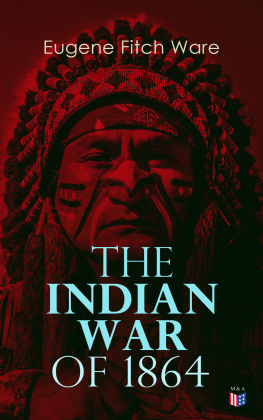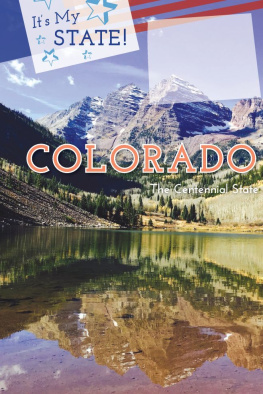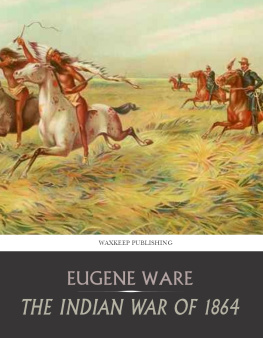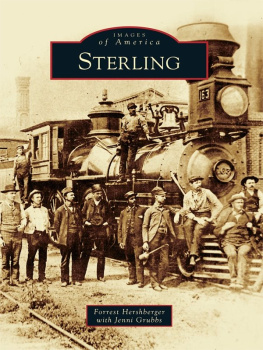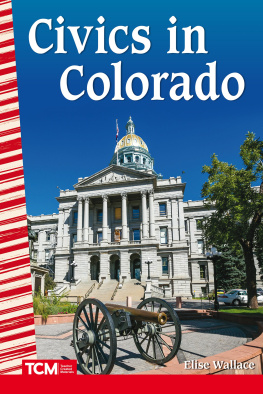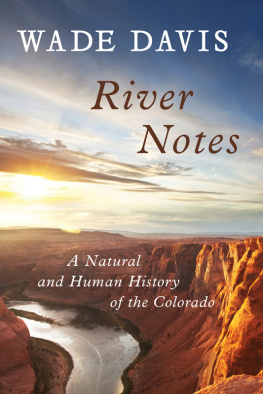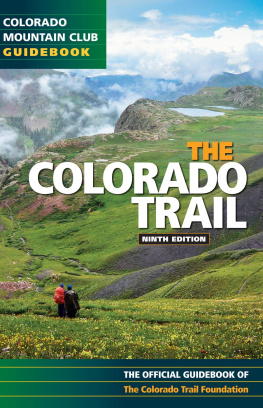Chapter I.
The Summer of 1863 - Gettysburg and Vicksburg - Pea Ridge - Indian Prisoners - March to Rolla - The Seventh Iowa Cavalry - September 19, 1863 - Omaha - The Camp - Sole in Command - Drilling by Bugle - The Loyal League - General H. H. Heath
It was the summer of 1863. The battle of Gettysburg had been fought, and the Confederates had retreated to the south side of the Potomac. Pemberton had surrendered Vicksburg with 27,000 prisoners, and the Mississippi River had been opened to navigation for the people of the United States. The Confederacy having thus been cut in two, its government should have then seen that it was impossible to succeed, and should have surrendered, thereby saving the vast destruction of property and life which was ultimately to ensue from the overrunning of its territory by the United States forces.
All Europe deemed the Confederacy as no longer possible of success. Its recognition by European powers was now out of the question, and the United States was enabled to turn its attention to matters of detail. And among these matters was the question of the Indian nations then on the northwest, west, and southwest.
In the last days of the Buchanan administration, while preparations were being made for secession and war, the South had arranged to carry with it the support of the Indian tribes. The Indian tribes were governed by agents appointed by a dishonest Secretary of the Interior, and the spirit of rebellion was fomented among them as an incident to the coming war. After the Southern Confederacy had been ushered in, and an army put into the field, in 1861, the Confederate Government immediately turned its attention to the utilization of the Indian. The tribes in the Indian Territory, then powerful and warlike, having long been treated as separate nations, exercised rights of sovereignty, and, under the influence of Confederate legations, gathered together in conventions, and formally seceded from the Union. This idea of secession, although ridiculous, because independent powers do not secede from one another, was nevertheless a strong factor in favor of the Confederacy, and a matter of great danger to the southwestern States of Kansas and Missouri and the weak frontiers thereof. But not only the tribes of the Indian Territory seceded, and put themselves in the scale of antagonism to the United States of America, but through their efforts the whole Indian population of the West was precipitated against the border States as far north as Minnesota, where barbarous massacres took place. When it was reported that the Indians of the Indian Territory were to be turned upon the Union forces, an intense feeling prevailed in the North against these Indians, and it recalled to mind the historical fact, known to every American, how the British did the same thing during our wars for independence, and even tried to turn those tribes against us in the Northwest in the War of 1812, and partially succeeded.
After the battle of Wilson Creek, which took place in southwestern Missouri August 10, 1861, General Macintosh, the senior Confederate in command, retired with his army to Arkansas, leaving General Price to look after the Missouri troops, and the Missouri field. While recruiting was going on for the Confederate service in Arkansas, and while fearing the result of Frmont's appointment to the command at St. Louis -- a fear which was groundless -- the Confederates took into their service a number of Indians from the Indian Territory. This fact was rumored around, and finally got into the Northern newspapers. As the methods of Indian warfare were known, and no one expected any quarter from Indians, the sentiment prevailed that every Indian caught in hostility to the Government should be summarily killed, and no feelings of humanity or sentiment seemed to oppose it.
At the battle of Pea Ridge, which was fought on the 6th, 7th and 8th days of March, 1862, a large number of these Indians were found among the Rebel forces. This battle, fought with grim determination on both sides, ended in crushing defeat for the Confederate General, his death, and the retreat and scatterment of the Confederate army there engaged. It so happened that eleven Indians were captured upon that field by persons so mild-tempered that they spared the lives of the captives. All the other Indians were killed outright. When these eleven Indians were got together, it was determined to send them North, for the purpose of (to use an expression of the day) "firing the Northern heart." It was believed that if these Indians could be exhibited as being captured with arms in their hands there would be an immediate outpouring of sentiment which would bring to the aid of the army, money and volunteers in increased ratio; although even at that time, sentiment was strong, because McClellan had gathered together and organized a fine army on the Potomac, which he was shortly to move, as was believed, to quash the Confederacy at Richmond. A large number of those captured at the Pea Ridge battle, "poor white trash," that did not know what they were fighting for except that they thought they were fighting to prevent the negroes from marrying into white families -- these most ignorant people, as a general rule, when captured, had things explained to them, were given the oath of loyalty; and they agreed to go home, not fight any more, and attend to their own business. But among the captives were a great many intelligent persons, men who had held official positions, civil and military, and these it was thought best to send up North to the military prison at Chicago. The writer of this book was detailed to go with these persons, numbering slightly over four hundred, including these eleven Indians, to the city of Rolla, which was the end of the railroad then projected from St. Louis to Springfield, Missouri. Rolla was one hundred and thirty miles from Springfield, and seventy miles from St. Louis.
The Pea Ridge battlefield was 80 miles southwest of Springfield. For the purpose of conveying these prisoners, together with wagons to haul back supplies, there was detailed a motley sort of guard. They were composed of convalescents who at Springfield had got out of the hospital, and who were believed equal to the light duty of convoying these prisoners, rather than the severe duty of campaigning down through Arkansas. In addition to these there were a few furlough men, who, after the battle of Pea Ridge, and the dissolution of the Confederate army, were permitted to go home for thirty days. There were also a few whose term of service had expired; there were a few Missouri Home Guards; there were a few cavalrymen detailed as wagon guards; there were some who were wounded so slightly that they could still do effective guard duty. The whole escort could, perhaps, be classed as a hundred cavalrymen, and fifty infantrymen. From Pea Ridge as far as Springfield, Missouri, the prisoners were escorted by several companies of cavalry who came along to take back from Springfield a lot of army supplies.
The route from Pea Ridge to Springfield was the most dangerous part of the route. From Springfield to Rolla the writer was not the commander of this expedition, but was a subordinate. Nominally, the officer in command was an Iowa Cavalry Lieutenant, named Patterson, who had been a very brave man, but had become ill through the exposure of the winter. The doctor believed that the Lieutenant had acquired the rudiments of consumption, and had suggested that the Lieutenant be given a furlough of ninety days to go home, and receive treatment. This officer was feeble, and as a fact, he never returned to the service, but died shortly afterwards; so that the responsibility of this trip was largely upon the writer of this. The orders were to keep the strictest guard upon these Indians, and not let any of them escape. It was desired that all should be taken safely and surely to the North, so that they might be exhibited as a show in the Northern cities, in a group. The indignation of the soldiers of our command towards the Indians was very great.

